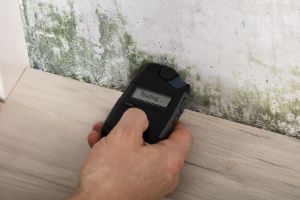
Mold growth in commercial buildings can cause many health problems for employees and visitors. This, in turn, becomes a legal liability that can threaten your business’s bottom line and its very survival.
As a commercial building owner in a damp environment like Monterey County, California, you need to understand the risks of molds, including Cladosporium, and take preventative measures to protect your staff and customers.
What Kind Of Mold Is Cladosporium?
Cladosporium is a genus of mold which includes more than 40 individual species. These fungi thrive in both indoor and outdoor environments. Cladosporium can be dark green, black, or even yellow in appearance and typically grows in moisture-rich areas. While Cladosporium isn’t as dangerous as black mold (Stachybotrys chartarum), it can still cause health problems in people with compromised immune systems or respiratory ailments.
Health Hazards Of Cladosporium
Different people have different tolerance levels when it comes to fungi exposure. Here are some of the most common health problems reported. For people with pre-existing respiratory conditions, fungal exposure can worsen them.
- Asthma
- Allergies
- Sinus & Ear Infections
- Irritated Eyes
- Rashes
- Headaches
How To Check For Cladosporium Contamination
Mold growth wreaks havoc on indoor air quality. If certain rooms smell damp or musty, you might have a problem. Or you may have found suspicious discolorations or visual mold growth in specific areas. Even if you don’t see any obvious contamination, you should conduct frequent visual inspections to be safe. Here are just some of the indoor places where fungi can thrive.
- Under Sinks
- Near Faucets
- On Curtains
- In Basements
- In Laundry Areas
- Near HVAC systems
- In Attics, Bathrooms, & Basements
Identify The Source
Before attempting to get rid of mold, you must mitigate the circumstances allowing it to grow. This could mean fixing leaking pipes, putting dehumidifiers in certain rooms, and adding exhaust vents or opening windows during the day.
DIY Mold Removal Doesn’t Always Work
Even after you’ve removed moisture sources, the mold won’t just go away on its own. You can surface treat minor mold growth with fungicides. However, the problem can be more than surface-deep. Because of this, it’s a good idea to contract your Cladosporium removal to a remediation company. Remember – people’s health is at stake – and so is your reputation as a business owner.
When In Doubt, Call In The Experts
A professional mold inspection by a certified environmental engineering firm will let you know whether you have a problem with Cladosporium, black mold, or another type of fungus. In Monterey County, you can count on M3 Environmental.
Our mold experts can tell you what fungal growth is present and help you design a remediation plan to restore your facility and improve your indoor air quality. Call us today for more information and to schedule a mold or other environmental hazard inspection.





